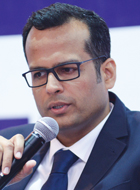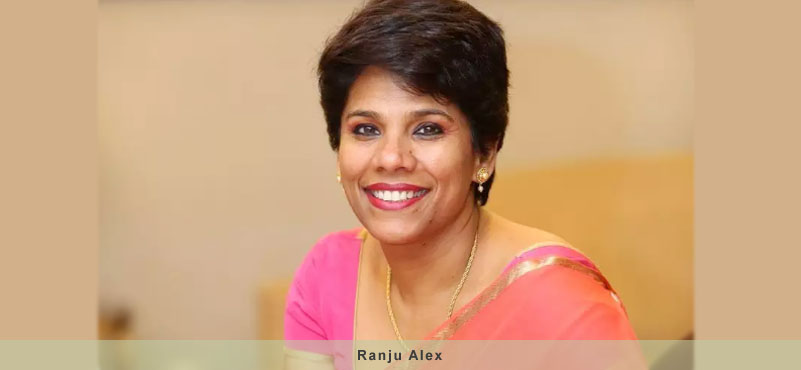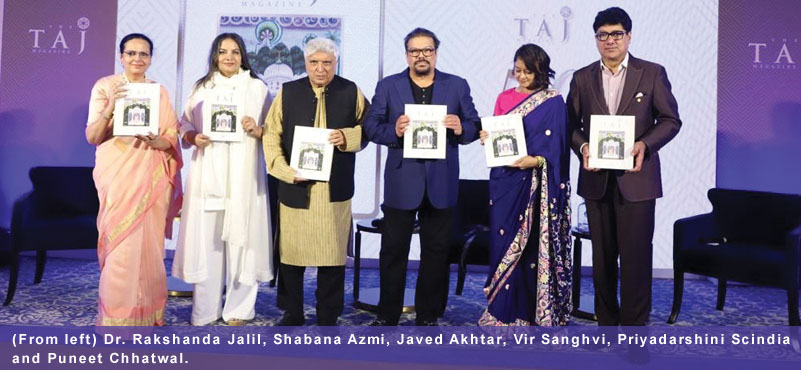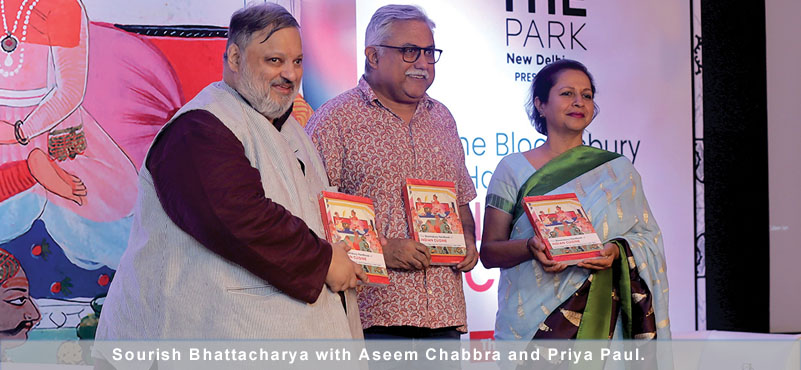Discussing the vital role that the digital space is to play in the sales and distribution strategy of the Taj Group, Chinmai Sharma, Chief Revenue Officer, Taj Hotels Resorts and Palaces talks about the importance of OTAs, both domestic and international, in garnering a loyalty base as well as building web revenues. In an exclusive talk with TourismFirst, he expounds how the app space is continuously on an upward trajectory and discusses how web bookings have resulted in a higher yield and hence, in turn, better value creation.

CHIEF REVENUE OFFICER, TAJ HOTELS RESORTS AND PALACES
How do you ensure ‘best rate guarantee’ on your hotel’s website, especially at a time when you have also offered it to OTAs, many of whom are subsidizing room rates by paying out of their own pocket to garner a bigger market share?
Taj Direct Best Rate Guarantee is a promise to our guests that the best rates and offers will be available to the customer on our website. We are confident of our best rate guarantee and offer a price match plus a further 10% discount if a customer finds a lower publically available rate within 24 hours for the same room/suite type and rate conditions.
There are many benefits beyond the best rate when a guest books directly through our website – our award winning loyalty program, Taj InnerCircle, has one of the best earning rates for a hotel loyalty program when you book through our hotel website. Members of Taj InnerCircle also receive exclusive offers via the website which they would not receive on any other channel. The simultaneous growth in our loyalty base and web revenues over the last couple of years are strong indicators that this offering has been well received by our consumers.
Do you reckon that your own website would be able to match the might of OTAs ever in terms of outreach?
One of the key benefits of our OTA partners is their reach. Their marketing spend and global reach does help us with new customer acquisition and given the fact that a typical traveller will shop a few sites before booking – we do benefit from their ‘billboard effect’. While we might not be able to match the reach of a major OTA partner, our focus has been on curating a great surfing experience for all our web visitors. The typical Taj guest is seeking unique and bespoke experiences – both at our hotels and in the destinations where we operate. Over the last 12 months we have added great content and rich imagery for our hotels and destinations. In addition we have developed mobile responsive websites which render a great experience irrespective of device and platform. These initiatives have started to show results and currently our website is the fastest growing channel.
Innovation is a critical component to technological growth. How are you going about enhancing the online experience of the consumer? What is the share of the business coming from the cumulative online space, including your own website, domestic and foreign OTAs, and how do you intend to take this forward? What is your business plan for the next couple of years?
In 2015, we embarked on a journey of digital transformation of our interfaces, channels, and customer touch points to make sure that our online experience is in line with our offline experience where Taj has been a pioneer for over a 100 years. As part of this journey, we tied up with the best in class design, hosting and CMS companies to launch a world-class website that was intuitive and responsive. In addition we added lots of relevant hotel and destination content to make it easier for our site visitors to find what they need. These initiatives have resulted in a 40-45% growth in our web bookings this year. Digital is one of the most critical part of our sales and distribution strategy going forward and we are working on ways to further reduce the cost of acquisition using our own website and apps. Internet as a channel already contributes about a quarter of our overall room revenue and we expect this number to reach 35-40% within the next few years. The next phase of this journey will include enhancements to our website, mobile apps, payment solutions and also some exciting changes at the physical touch points of our hotels. Our digital business plan is simple – to provide engaging and relevant content across all devices and platforms in the preferred language and currency of our guests.
How is the transition from computers to hand-hand devices happening? How are you capturing the brilliance of your product on the mobile? How much of your online business has moved to app from computers? If you have not moved to the app then will you be taking to it? Will that be the next logical step?
We have seen a major shift in the traffic to our website from desktops to mobile devices. While the website traffic was heavily skewed towards desktops till a couple of years ago, the traffic at present is split equally between computers and hand-held devices. We also note that the platform usage changes during the day for the same visitor (desktop during the day, mobile during evening and tablets at night). The launch of our responsive website in March last year was the first step in our journey towards mobile commerce and has been well received by our customers. With mobile connectivity improving tremendously in India, we realised that the time was right to make a quantum leap in the kind of content we use to portray our properties on the mobile interface.
We invested heavily in the website content including images and videos and even 3 virtual reality films to showcase our properties. These initiatives have resulted in a triple digit increase of revenue (though from a small base) from mobile channels in this financial year. At its current growth rate, we anticipate our mobile traffic to surpass our desktop user traffic very soon. This is especially interesting given that our typical reservation value is quite high.
With a large base of loyal consumers under Taj InnerCircle, a mobile app is an essential part of our mobile strategy going forward. We have recently launched a hybrid version of the mobile app and will shortly be rolling out full-fledged native app to ease the consumer journey before, during and after checkout.
Is there any perceptible trend in bookings from overseas, in preference for FITs against GITs? Like more individuals booking on the net for your leisure sector?
With 101 hotels in 64 locations across 11 countries, the Taj brand is gaining global recognition and we are seeing a steady increase with our brand being a popular choice among international travellers seeking bespoke Indian hospitality and authentic experiences. A good part of our international guests are using international OTA’s and/or traditional travel agencies to book their travel. At the same time, we have noticed that an increasing number of leisure travellers are booking on our website with larger lead times and length of stay. Our unique hotels are now also available as customisable packages in the form of Taj Holidays – the new Taj holidays web experience is designed to make the discovery and booking experience simple as well as seamless. We also working towards launching our brand website in select international languages very soon.
Is web booking increasing your average realisations?
The major reason why web bookings and digital channels form the crux of our growth strategy is because of their high yield, a great guest booking experience and the fact that we ‘own’ the customer. On average, a booking made via our website is nearly 30% higher in value than a booking made through other channels. This allows us to pursue an aggressive acquisition strategy on digital to increase the revenue share through the website while keeping the cost of acquisition the lowest.




































